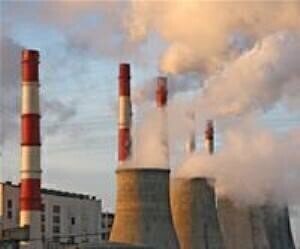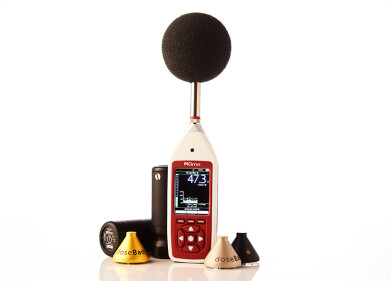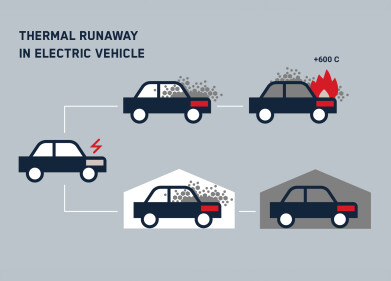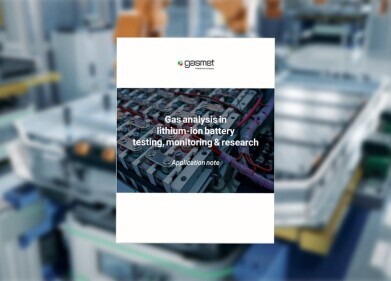Health & safety
Which Workplaces Need to Worry about VOCs?
Nov 19 2021
In brief, volatile organic compounds are molecules wholly or partially composed of carbon atoms bonded either with carbon atoms or other elements that evaporate significantly at room temperature and are mostly insoluble in water. Of course, if you want a properly thorough scientific explanation of what VOCs are, you’ll need a dedicated article, so check out our piece on What Exactly Are Volatile Organic Compounds (VOCs)?
Where do we find VOCs?
Volatile organic compounds are in everything. Paints, paint strippers, cleaning supplies, pesticides, building materials, copiers, copy paper, printers, glues, adhesive tape, plasters, wood varnish, nail varnish, lip-sticks, air fresheners, permanent markers – take your pick! Most of us don’t even notice these everyday items, they’re just bland, unremarkable features of our landscape. But reports suggest that all of these objects, and many more, hide harmful volatile organic compounds behind their boring exteriors.
For the most part, humans ingest VOCs through inhalation or through contact with the eyes or skin. But, as with pretty much all pollutants, volatile organic compounds are most dangerous when inhaled, as the vapourised compounds are able to pass through the thin membrane of the lungs into the blood-stream. In general, ingestion of volatile organic compounds induces effects ranging from mild epidermal irritation and irritation of the respiratory tract to generalised corruption of the central nervous system and many forms of cancer. If you’d like to know more how harmful volatile organic compounds can be, there’s a longer run-down here.
The factors at work
OK, so VOCs are everywhere and they’re harmful – but just how exposed am I?
The main occupations which involve regular exposure to volatile organic compounds include:
- Painter-decorators working mainly indoors with poor ventilation, as the most popular brands tend to use acetone ((CH3)2CO), a volatile organic compound, as a solvent.
- Those working in poorly-ventilated offices, as many ubiquitous items contain VOCs, items like air fresheners (benzene; C6H6), adhesives (benzene; C6H6), permanent markers (toluene; C6H5CH3), and toner (styrene; C6H5CHCH2).
- Dry-cleaners, much of the detergents for whose activities contain perchloroethylene (C2Cl4).
- Those working in the kitchen of restaurants with active, wood-burning stoves, as most wood contains isoprene (C5H8), a naturally-occurring VOC.
- Drivers of all kinds in vehicles fuelled by gasoline, which usually contains methyl tertiary butyl ether (C5H12O), or diesel, containing both formaldehyde (CH2O) and benzene (C6H6).
- Those performing various forms of oil and gas extraction, activities which tend to release large quantities of ethane (C2H6).
- Those working in the manufacture of chemical products, who are at risk of high levels of trichloroethylene (ClCH=CCl2) exposure during the production and storage processes.
What can you do about it?
Well, the first step in terms of safe-guarding has to be monitoring, to ensure that exposure is at least kept to the lowest possible levels. In industrial conditions, the most viable, and widely-used, method is continuous emission monitoring (CEM), a means of detecting the concentration of contaminants in the air. Instruments designed to perform CEM are principally composed of a sample probe which collects a volume of air, an analyser – whether using ultrared absorption, chemiluminescence, fluorescence, beta ray absorption, etc. – to determine the relevant concentrations and some sort of filtration system to obstruct materials which threaten the system. Such systems come in all manner of varieties, so you’re certain to find something that’s exactly what you’re looking for. For a bit more of a comprehensive overview of continuous emission monitoring, turn to our long-form discussion of What is Continuous Emission Monitoring?
Digital Edition
IET 35.2 March
April 2025
Air Monitoring - Probe Sampling in Hazardous Areas Under Extreme Conditions - New, Game-Changing Sensor for Methane Emissions - Blue Sky Thinking: a 50-year Retrospective on Technological Prog...
View all digital editions
Events
May 10 2025 Karachi, Pakistan
May 11 2025 Vienna, Austria
May 11 2025 Seoul, South Korea
Salon Analyse Industrielle & Instrumentation
May 14 2025 Paris, France
May 15 2025 Istanbul, Turkey













_(4427399123)-(2).jpg)





